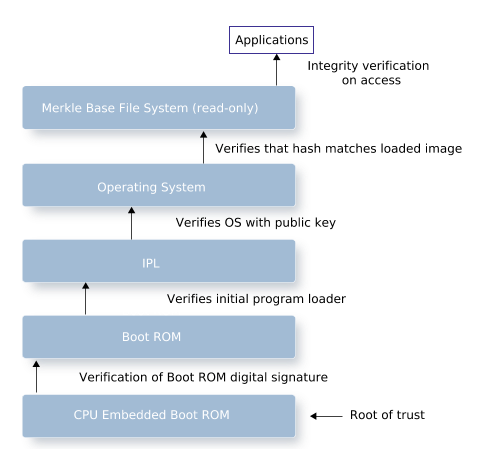The secure boot mechanism is based on the concept of a chain of trust. This kind of chain is anchored (rooted), and the root (for example: a factory-blown key hash) is inherently trusted. The root of trust requires a public key that is known to the firmware. From there, a private key is used to sign files such as the IFS image.

Systematic validation during boot-up starts at the root of trust and extends to boot ROMs, primary/secondary boot loaders, IPLs, and IFS images. Each subsequent piece of firmware and software in the boot process is cryptographically validated by its predecessor.
When a securely booted system is up and running, it is considered secure unless the root of trust has been compromised. If the contents of the secured IFS image change after boot-up, the board will not reboot.
Securing the image helps defend against low-level attacks. A trusted environment begins with a trusted platform. When secure (trusted) boot is in place, if an IFS image is compromised, it does not load or boot on the board.
QNX Trusted Disk (QTD) devices provide integrity protection of the underlying disk data via a hash tree of all filesystem blocks which are verified on demand. The root hash of the tree is signed with a key pair that provides assurance that the filesystem has not been tampered with. Accessing a part of the filesystem that fails the integrity check returns an error. See “QNX Trusted Disk” in the System Architecture reference.
To learn more about how to install and build a QNX BSP, see:
- the BSP User Guide for your board
- Building Embedded Systems
- the Release Notes for the BSP any additional board-specific instructions
For additional information on how to secure a specific board for booting, refer to the vendor's notes for the board.